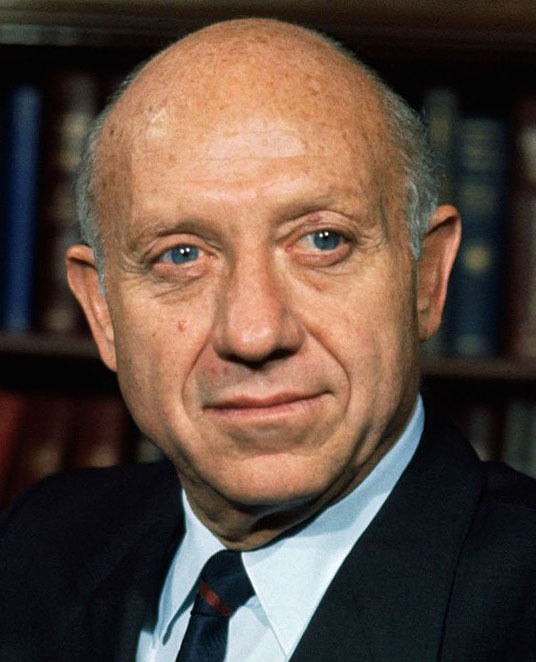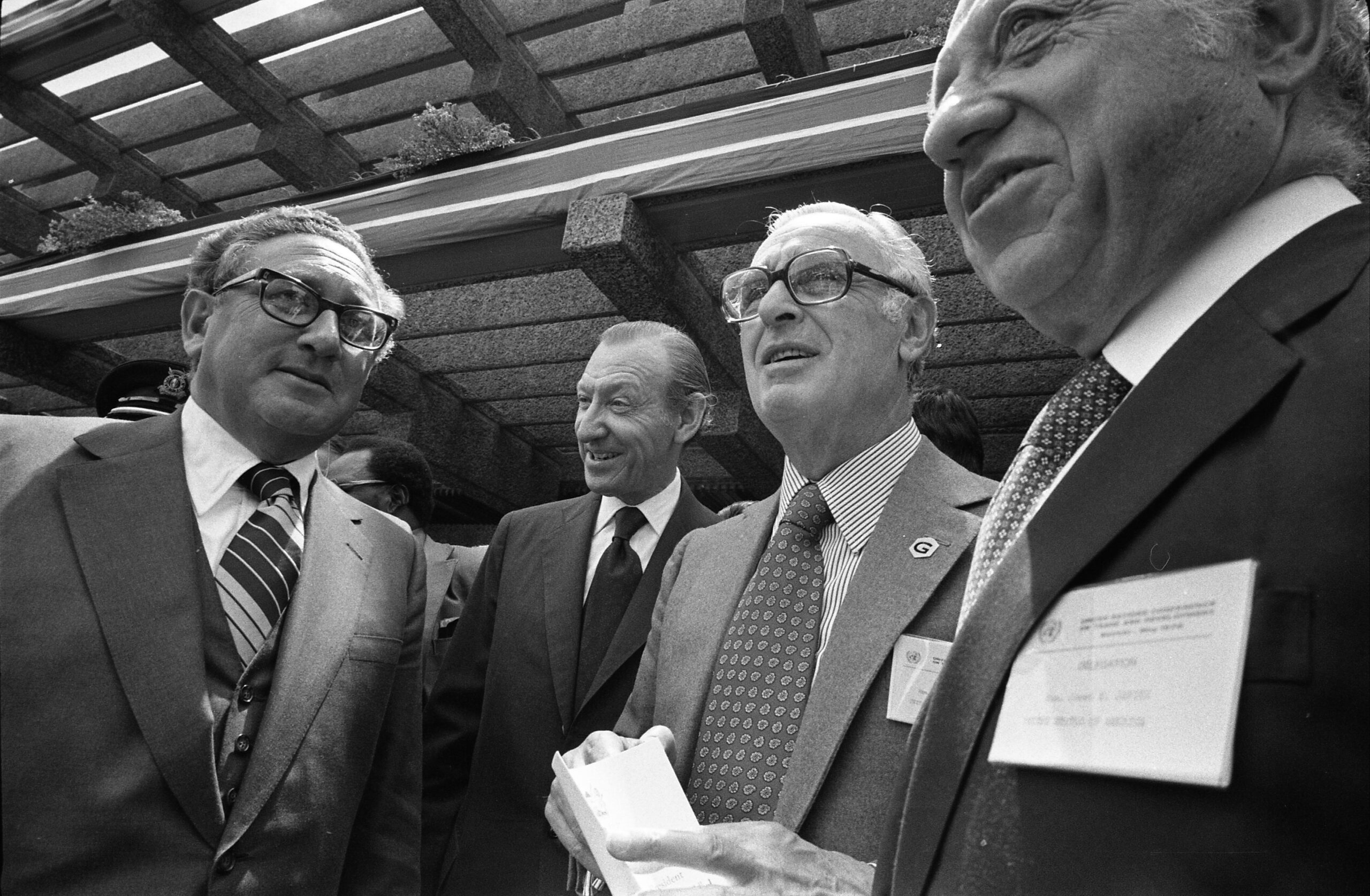Jacob K. Javits was a significant figure in New York City’s history, serving as a U.S. Senator from 1957 to 1981. Known for his dedication to public service, Javits played a pivotal role in shaping the city’s landscape, policies, and national position. This article delves into his contributions across various domains, highlighting his lasting impact on the city he served.
Early Life and Political Ascension
Jacob K. Javits’s journey from humble beginnings in the Lower East Side of Manhattan to the corridors of the U.S. Senate is a testament to the American Dream. His life and career were profoundly shaped by his early experiences and education, both of which laid the foundation for his extensive contributions to public service and legislation.
Background and Education
Born on May 18, 1904, to immigrant parents who had come to the United States seeking a better life, Javits grew up in a neighborhood that was a melting pot of cultures, languages, and dreams. The Lower East Side, known for its dense immigrant population, provided a tough yet vibrant environment that imbued Javits with a deep sense of empathy and understanding for the struggles of the working class and immigrants. This environment shaped his values and perspectives, reflecting his legislative priorities later.
A belief in its transformative power drove Javits’s pursuit of education. He attended New York University (NYU) for his undergraduate studies, a choice that kept him close to the realities of the city he would one day serve. At NYU, Javits was exposed to a broad spectrum of ideas and ideologies, fostering a keen interest in law and public policy. His academic excellence and determination led him to Columbia Law School, where he further honed his legal acumen. Columbia provided Javits with a legal education and a deeper understanding of the American legal system and its potential as a tool for social change. His time at Columbia was instrumental in equipping him with the skills and knowledge that would later define his career in public service.
Political Career Beginnings
Jacob Javits’s foray into politics was marked by his election to the New York State Assembly in 1946, representing a Manhattan district. This initial step into politics was driven by a desire to effect tangible change in the lives of New Yorkers, particularly those from backgrounds similar to his own. Javits quickly distinguished himself in the Assembly as a thoughtful legislator interested in civil rights and social welfare issues.
His legislative work during this period already hinted at the themes defining his career: a commitment to justice, equality, and the welfare of the less privileged. Javits advocated for legislation to improve labor conditions, expand access to education, and ensure civil liberties for all New Yorkers, regardless of their race, religion, or economic status. His efforts were not just about passing laws but about laying the groundwork for a more equitable and just society.
This early phase of his political career also showcased Javits’s ability to work across the aisle, a trait that would become one of his hallmarks in the Senate. Even as a young assemblyman, Javits believed in the power of bipartisanship and the importance of finding common ground on issues that mattered to the people of New York.
His early life experiences, education, and initial political engagements created a solid foundation for Javits’s ascension into American politics. From the Lower East Side streets to the halls of Columbia Law School and eventually to the New York State Assembly, each step of Javits’s journey was a building block for his future achievements.
His background and education instilled in him a profound understanding of the complexities of society and governance. At the same time, his early political career provided a practical arena to apply those insights, setting the stage for a distinguished career that would leave a lasting impact on New York City and beyond.
Legislative Achievements
Urban Development and Infrastructure
- Javits Convention Center: Perhaps the most visible symbol of his contributions to NYC’s infrastructure, the Jacob K. Javits Convention Center stands as a testament to his efforts in promoting economic growth and development.
- Transportation Initiatives: Javits was instrumental in securing federal funding for the city’s transportation infrastructure, including bridges, highways, and public transit systems, which facilitated smoother connectivity within the city and its outskirts.
Social Welfare and Health Care
- Medicare and Medicaid Advocacy: Javits was a staunch advocate for establishing and expanding Medicare and Medicaid, ensuring that New York’s elderly and low-income populations had access to healthcare.
- Mental Health Services Reform: He spearheaded the Mental Health Centers Act of 1963, which led to the development of community-based mental health centers and significantly improved mental health care accessibility in New York City.
Education and Research
- Higher Education Act of 1965: Javits played a key role in the passage of this act, which provided federal aid to higher education institutions and made college more accessible to New Yorkers through financial aid programs.
- Support for Research Institutions: His advocacy for federal funding for scientific and medical research benefitted New York’s prestigious research institutions, fostering innovation and advancements in various fields.
Civil Rights and Social Justice
- Civil Rights Legislation: Javits was a proponent of civil rights legislation, including the Civil Rights Act of 1964 and the Voting Rights Act of 1965. He advocated for equality and fought against racial discrimination in New York City and beyond.
- Immigration Reform: He worked towards reforming immigration laws, focusing on eliminating quotas based on national origin, which directly impacted New York’s diverse immigrant population.
Economic Policies and Business Development
- Support for Small Businesses: Javits advocated for policies that supported small businesses, recognizing their importance to New York City’s economy. He worked on legislation that provided loans and assistance to small enterprise owners.
- Trade and International Relations: Understanding New York’s role as a global hub, Javits promoted trade policies that benefited the city’s ports and international commerce sectors, contributing to its economic prosperity.
Environmental Conservation and Urban Planning
- Environmental Protection Initiatives: Javits was ahead of his time in recognizing the importance of environmental conservation, supporting legislation that aimed to protect New York City’s parks, rivers, and green spaces.
- Urban Renewal Projects: He was involved in urban renewal projects that sought to rejuvenate neglected areas of the city, always to balance development with community needs and historic preservation.
Cultural Contributions
- Arts and Humanities Funding: A patron of the arts, Javits championed federal funding for cultural institutions, ensuring that New York City remained at the forefront of the American arts scene.
- Public Libraries and Educational Programs: His support extended to public libraries and educational initiatives, enhancing all New Yorkers’ access to knowledge and cultural resources.
Legacy and Impact
- Enduring Influence: The policies and projects initiated by Javits have left an indelible mark on New York City, contributing to its status as a leading global city.
- Commemoration and Recognition: Beyond the convention center that bears his name, Javits’s legacy is remembered through various programs and awards established in his honor, reflecting the wide-ranging impact of his work.
Conclusion
Jacob K. Javits’s contributions to New York City spanned the realms of infrastructure, social welfare, education, civil rights, economic development, environmental conservation, and cultural enrichment. His forward-thinking policies and dedication to public service transformed the city’s physical landscape and social fabric, laying the groundwork for future generations. As we walk the streets of New York City, from the bustling halls of the Javits Center to the serene paths of its parks, we witness the lasting legacy of a man who devoted his life to the betterment of his city and its inhabitants.


